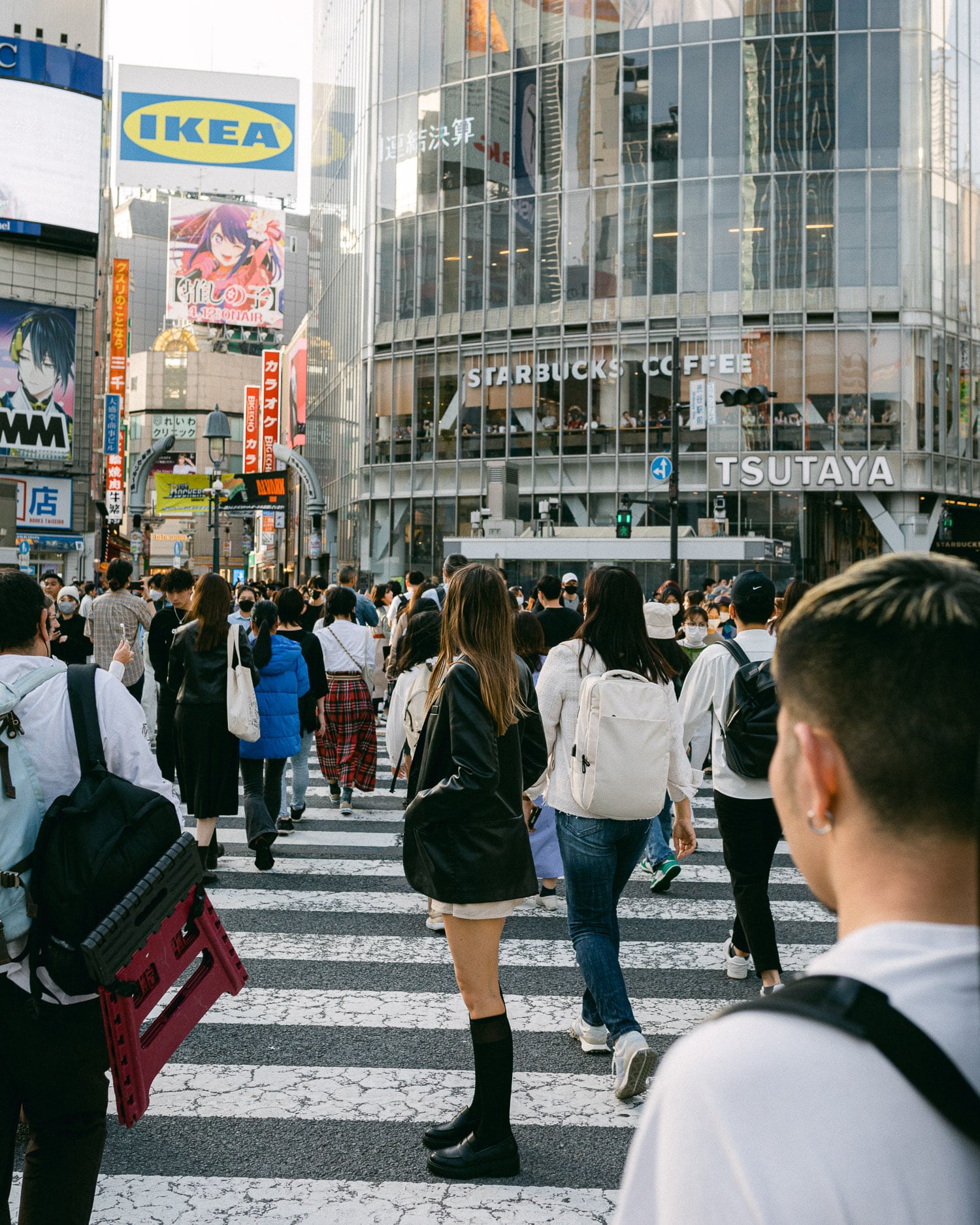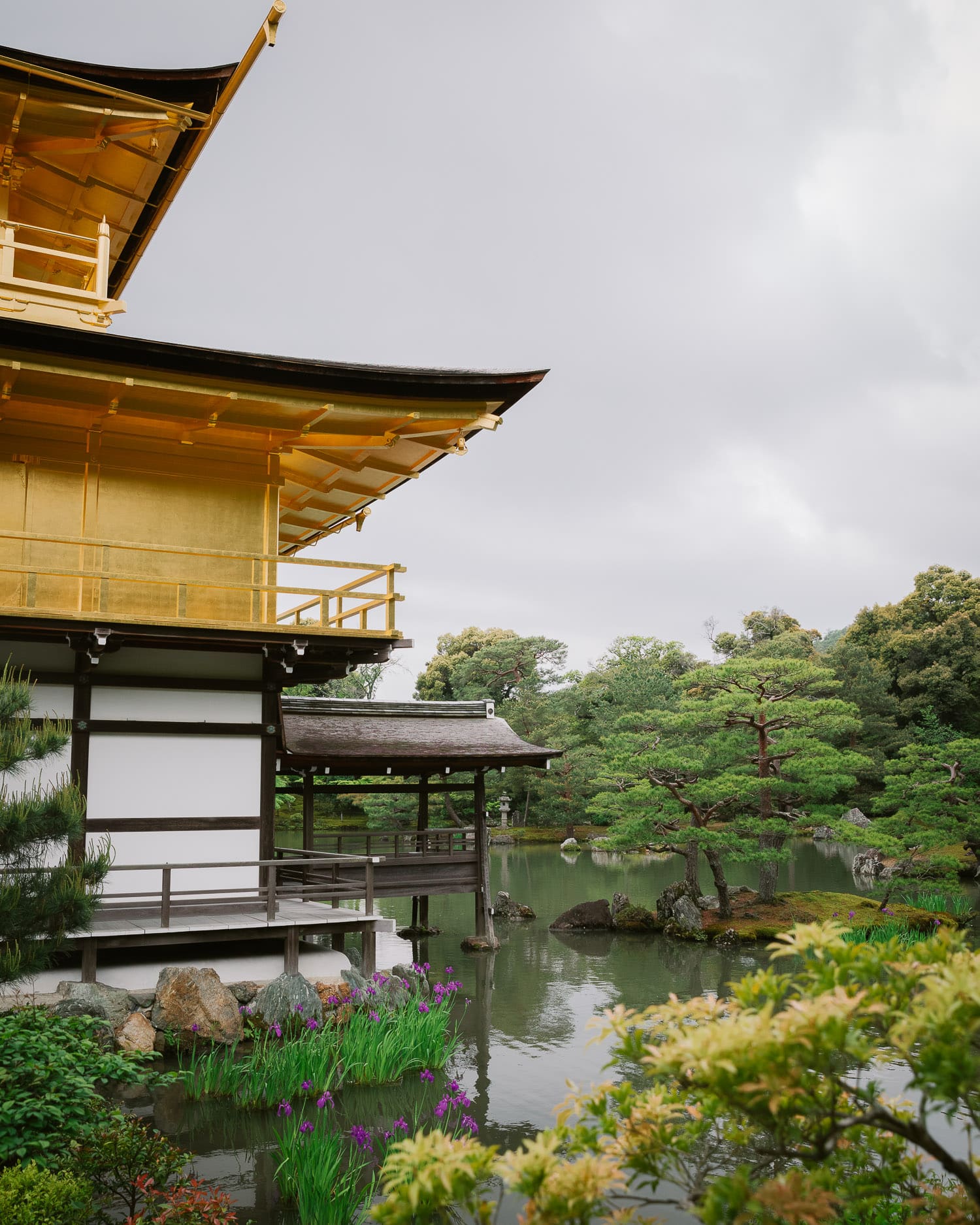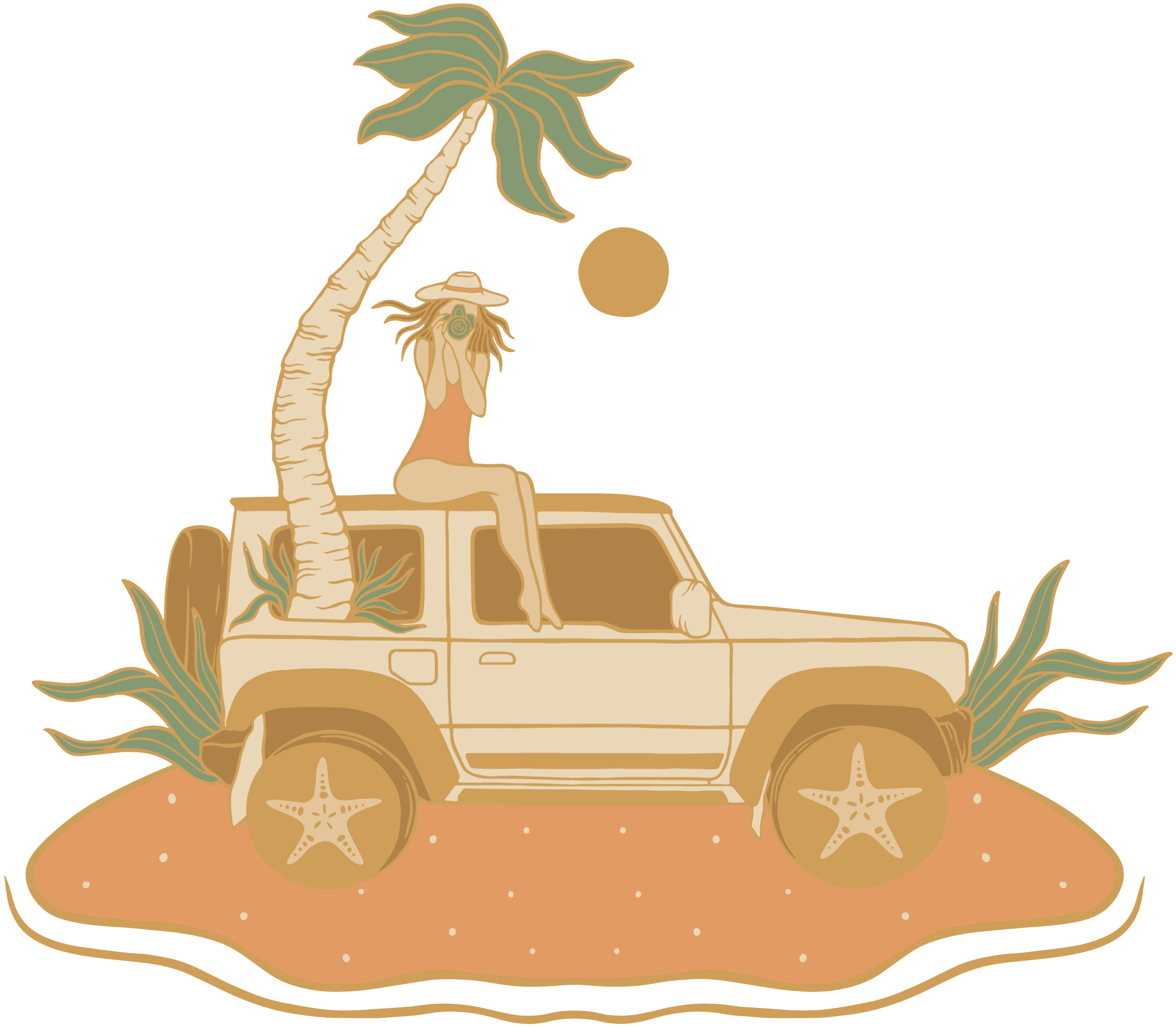Japan Itinerary: 16 Days
日本
I’ve always heard people raving about how incredible Japan is – the culture, landscape, food, people.. everything. Now that I have finally experienced Japan, I understand what they were talking about. Japan is another world. If you haven’t travelled here yet, my hope is that I inspire you to do so, because it’s a destination that you should experience at least once in your lifetime.
Before I get into the itinerary, I quickly want to mention a few tips that will make your life easier travelling in Japan.
Japan Rail Pass (also known as JR Pass) – The JR pass is valid on all major JR national trains including Shinkansen bullet trains and Narita Express trains (Narita airport). This is a great option and very cost effective if you plan to travel around Japan. You can pre-order your pass in Australia and have it sent to your home address. We purchased ours a few weeks before we left. There is an option to purchase the pass for a higher price at the train stations and airports in Japan. If you are unsure if this pass is suitable for you, check out the JR Fare Calculator and see if it will be a good financial choice for your trip. The options are 7/14/21 days. We chose the 14 day pass and didn’t activate it until two days into the trip. This worked out well because we were staying around the Tokyo area for the first few days. You can activate the pass at any major JR station.
Tip 1: ** Make sure to pre-book your seats for the bullet train** Some bullet trains require you to book seats so please be aware of this.
Tip 2: If you have a long train ride, make sure to purchase food before getting on. There are so many options at the trains stations – it’s wild! I recommend the bento boxes.
Tip 3: If you lose your JR Pass you will not be able to refund or exchange for another ticket, however if you damage the ticket, present it to a JR counter for a replacement. They are made of paper so keep it safe and away from moisture.
SIM CARD: You can order a SIM card or a pocket wifi via the JR website. We paid $100 AUD at the airport for 16 days unlimited data. There are so many great options but I highly recommend getting a SIM.
GOLDEN WEEK: 29 Apr – 5 May. Golden week is four national holidays within seven days. If you decide to travel to Japan during this time of year, make sure to book well in advance. Accomodations are almost fully booked and for what’s left, the prices are super high (min. $600/night). Our plans for Hiroshima were actually cancelled because we couldn’t find any available accomodation haha.
Suica: Suica is a pre-paid rechargeable smart card that you can put on your phones (wallet). This saves you from buying a ticket at the vending machine which will also save you so much time. It is super easy to use, just tap your Suica at the ticket gate and it will be automatically deducted from your card. It can be used for shopping, JR East trains, subways and buses. I topped up every few days $20 AUD at a time.
Cash: Make sure to bring lots of a cash with you. Most places don’t take card.
Waiting: Most places will have a line and you will have to wait for most popular restaurants. I recommend going early if you don’t want to wait long.
What NOT to do in Japan
✧Eating & walking is a big no no.
✧Stay left on escalators. This is probably the best thing I’ve ever seen.
✧If using public transport, stay quiet and don’t talk on the phone.
✧Onsen rule: Make sure to shower before getting in and don’t forget your towel.
✧ Don’t hand someone cash/card, always put it on the plate provided.
✧ Don’t leave restaurant with food on a plate or order more before you have finished.
Apps that I recommend
Google Translate – super helpful!
Google Maps – best way for getting around
MAPS.ME – if you don’t have a SIM card, this is a good map app. Make sure to download that particular map before arriving.
Booking.com – accomodation
Earthquakes – Japan experiences more earthquakes than anywhere else in the world. This is something that you should be aware of. We were in Tokyo when experienced a 5.2 earthquake and low key — I was freaking out haha. If you have a SIM card in your phone, you might get a warning, we were alerted by Siri just before the shaking started.
Rubbish Bins – Japan is pretty clean and it is bizarre because there are no rubbish bins anywhere! You need to take your rubbish with you or give the rubbish back to where you bought the food/product from.
東京, Tōkyō
DAY 1 - 2 - 3
We stayed in Shinjuku for our first 3 nights at The Shin-Okubo International Hotel ($106 AUD/night). We chose to stay in Shinjuku because it was the most central location for the places we wanted to visit.
Our first few days in Tokyo were spent soaking in what Japan has to offer. We ate almost everything we saw, explored different parts of the city and snapped away. I recommend getting an idea of what you want to see and where you want to go, but don’t get too caught up in lists. Tokyo is awesome just getting lost and exploring different places and trying new things. Below is a list of places we went in Tokyo.
Shibuya
✧Shibuya Sky – if you want to go up to Shibuya sky for Sunset, I highly recommend you make a reservation in advance, its a very popular spot!
✧Shibuya Crossing – famous and busiest intersection in the world. To get a good aerial view of it, check out the view point at Mags Park Rooftop. Cost for entry is to buy a drink. There is nothing special about this bar it’s just a good place for a view point.
✧Meiji Jingu Shrine
Harajuku
(In between Shinjuku and Shibuya)
✧Takeshita Street – an iconic main street only steps away from the station. It is filled with super cute cafes, you might of seen photos on instagram of the popular Santa Monica crepes. If you like bubble tea, I recommend Xing Fu Tang. It was the best bubble tea I’ve had.
✧Cat Street – lots of second hand clothing, hip shops, bars and restaruants.
✧Harajuku’s Eiwelt Gelato – delicious gelato
Ginza
✧Tsukiji Outer Market – my favourite market in Japan. It will filled with amazing stalls that sell and extensive range of local cuisine. I had the best sashimi here and Alex loved the A7 wagyu stick.
✧Nezu Shrine
Asakusa
✧Delicious Street food – you can find the TikTok famous Matcha Mont Blanc from Chacha Futatsume which is a 10 layered desert in a cone.
✧Hat Coffee – south of Asakusa they do 3d and 2d latte art. We got our boy Rusty and a Shiba Inu. I recommend messaging them on their Instagram and making a reservation.
Shinjuku (Vibrant nightlife, shopping, entertainment)
✧Omoide Yokochō – also known as Memory Lane. It’s an alleyway with a selection of mini restaurants.
✧2D cafe – everything was 2d including the cake!
Other –
✧Onibus Coffee – Nakameguro, Tokyo – cutest cafe near a train line. You can have a cuppa whilst watching the trains go by.
✧Shiro-Hige’s Cream Puff Factory
京都, Kyōto
Day 4 - 5 - 6
We loved Kyoto! We spent two nights in Kyoto but we would of happily stayed an extra night or two.
We stayed at Sakura Kyoto Fuga ($108 AUD/night). It was a great accommodation but found the location wasn’t the best. If we were to stay in Kyoto again, it would be near the Gion District.
Our first day in Kyoto we went to the Nishiki Market around 9am but found most of the market was fully open around 10am. Following a wander, we had lunch at Honke Owariya which is known for the oldest Soba restaurant in Japan. It was founded in 1465, you can find the incredible story of Owariya here. Opening time is at 11am, we rocked up around 10:30 and there was already a line out the door. We waited about an hour until we got seated. Saying that, it was so worth it. Amazing experience and the best soba! I got the Hourai Soba (cold) which was designed by his grandfather, the 14th generation.
After lunch we took a train to Kinkaku-ji (Golden Temple) which was built in 1397. We then took a taxi to the famous Arashiyama Bamboo Grove. I’ll be completely honestly with you, we could have skipped the bamboo forest. If you do visit, I recommend first thing in the morning so there’s less people. Although, the streets were pretty cool. It had a market style feel to it with delicious street food, souvenir shops and cafes.
Our second day was an early wake up call. We took a taxi to Ninenzaka for sunrise to take photos near the Hokan-ji Temple. It is definitely worth getting up early to skip the crowds. Ninenzaka and Sannenzaka are traditional Japanese streets located in the historical district of Higashiyama. They get so crowded during the day and unfortunately nothing really officially opens up until about 10am.
We then took a taxi to Fushimi Inari Taisha located in Southern Kyoto. This worked out well because we beat the crowds here as well. We hiked up to the summit which is 233m. About half way up the mountain there were some good views of Kyoto and more orange torii gates (great photo opportunities).
Our final day in Kyoto before heading to Osaka, we wandered the streets in the Gion District. We also went to the Kiyomizu-dera Temple which is a UNESCO World Heritage site. I fell in love with the streets around the river. So beautiful!
✧COFFEE
Starbucks (100 year old building)
Weekenders coffee
% Arabica
Wife and Husband
Cafe Bibliotic Hello
Walden Woods
✧FOOD
K36 Bar and Rooftop
Honke Owariya
Monk
Maccha House
Cocochi Cafe
Kumonocha
Arashiyama Miffy Sakura Kitchen
大阪, Ōsaka
Day 7 - 8
We used Osaka as a base for 4 days. We spent a day in Nara (Osaka>Nara 45 min away) and a day to Nachi Falls (Osaka>Kii-Katsuura 4 hr 35 min away). The street food in Osaka was delicious! Dotonbori was our go to place. It’s filled with neon signs, bars and restaurants serving up local specialties such as Takoyaki (pieces of octopus and dough inside a slightly crispy shell, garnished with takoyaki sauce, mayo, and Aonori).
Stayed – APA Hotel & Resort Midosuji Hommachi Eki Tower ($85 AUD/night)
Nara (Day Trip)
Day 9
We left early in the morning from Osaka and it took us roughly 45 minutes to arrive in Nara. Nara is famous for their bowing deer. Yes, they actually bow to you! We bought deer crackers from the vendors near Nara Park (roughly $2 AUD). We spent hours just watching and feeding the deer – they were the cutest. There are street markets around the park and lots of delicious food to choose from. I was obsessed with Tanghulu which is a fruit (strawberries, grapes, oranges) dipped in sugar syrup and served on a bamboo skewer.
If you like mochi (sticky rice cake), you need to go to Nakatanidou. It’s only a few minute walk from Kintetsu Nara Station and you can watch the fastest rice pounders making mochi right in front of you.
Nachi Falls ( Day Trip )
Day 10
Nachi Falls is Japan’s tallest waterfall and it was high on my list. It might seem like a mission to get here, however it is not that bad. You can take the train and use the JR pass or pay ¥7,890 yen from Osaka. We got the earliest Kuroshio train which left at 7:40am. I recommend booking your ticket the day before incase it gets fully booked. With a 4 hr 35 min train ride to Kii-Katsuura and a 25 min bus from the station we arrived at Nachi Falls around mid-day. You can also do the hike to Nachi Falls through the Kumano Kodo pilgrimage route which would be amazing but we didn’t have enough time. If you are interested in doing hikes, I recommend spending a few nights near by.
There are a few restaurants and souvenir shops with tasty treats. It was an awesome day trip and I highly recommend you check out this Japanese wonder. We were back in Osaka around 7pm.
The Kiso Valley
Day 11 - 12
Our first day in Kiso was spent exploring the beautiful town that runs alongside the mountains of the Central Alps. We stayed at Nukumorino-yado Konanoyu ($363 AUD/night) which is a Ryokan located in the mountains above Kiso. It was an incredible experience that gave us an insight of the Japanese lifestyle of their early culture. It was was more on the expensive side but it was definitely worth it and something we will remember forever.
On our way to Fujiyoshida, we stopped at Narai-Juku which is a well-preserved traditional post town nestled in Nagano’s Kiso Valley region. It was like taking a step back in time to the Edo period (1603–1868). We left our baggage at the train station office for a small fee so we were able to walk around. There were a few souvenir shops/restaurants selling local cuisine and galleries selling local art. We met a beautiful elderly lady and shared some stories together.
Fujiyoshida
Day 13 - 14 - 15
Located in Yamanashi Prefecture, Japan.
We stayed at Hotel De Machi 街のホテル ($168 AUD/night) which I highly recommend. The location was great and it has views of Mt. Fuji which I didn’t realise until we got our room. It was amazing! I booked two nights here because I wanted to see Chureito Pagoda and Shimoyoshida Honcho Street (street with view of Mt. Fuji) for sunrise.
On our first day we went to the Fuji Shiba-sakura Festival which is held typically from mid April to late May or early June. The views of Mt. Fuji with the flowers are beautiful. It took roughly an hour by bus to get here from the Kawaguchiko Station.
If you are near the Kawaguchiko Station, head to the famous Lawsons with Mt. Fuji in the background.
Our second day we went to Lake Kawaguchi and did the The Mount Fuji Panoramic Ropeway ($10AUD per person return trip). This is the best place to view all of Mt. Fuji.
Last day spent in Tokyo
Day 16
We spent our last night back in Tokyo because we wanted to be close to the airport the day before departing. We were able to explore places that we missed and also got a chance to re-visit the places we enjoyed. We spent our night near the Tokyo Tower.
Price breakdown (2 people)
✧Flights – Brisbane > Tokyo $1400 AUD. Always look out for deals.
✧JR Pass – $1044 AUD
✧Suica – $90 AUD
✧Food and spending money – cash out $2400 AUD
✧Accomodation – $2000 AUD
✧$6,934 AUD for 2 people








































